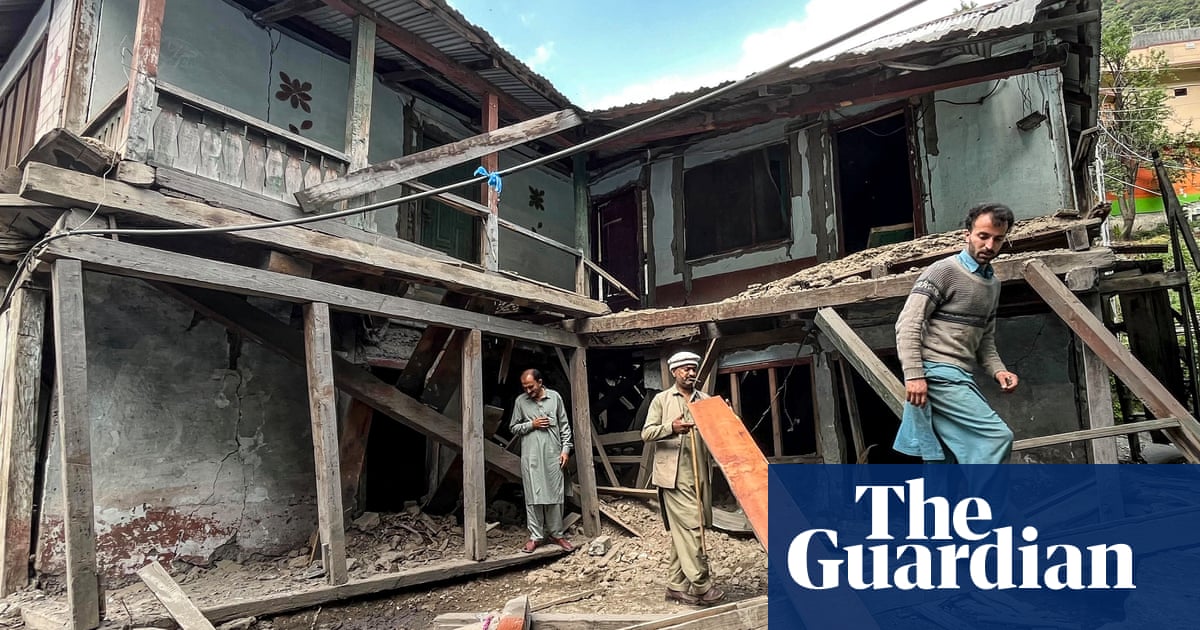US secretary of state, Marco Rubio, has offered US assistance in starting “constructive talks” to end the conflict between India and Pakistan, as thetwo states traded heavy missile fire on Saturday, prompting concerns over wider military escalation.
Rubio has been engaged in back-and-forth diplomacy between the two countries in recent days, calling for de-escalation as India andPakistanhave been engaged in daily clashes since Wednesday.
The US’s top diplomat “continued to urge both parties to find ways to de-escalate and offered US assistance in starting constructive talks to avoid future conflicts,” state department spokesperson Tammy Bruce said in a statement on Saturday.
Fighting between India and Pakistan started on Wednesday after Indian missiles hit nine sites in Pakistan, killing 31 people and triggering a cycle of tit-for-tat attacks between the two countries. India said Wednesday’s missile strikes were in retaliation for an attack in Indian-administeredKashmirin late April, which saw militants kill 25 Hindu tourists and a guide, which India blamed on Pakistan.
Clashes peaked on Saturday, as both countries launched missile strikes deep in each other’s territories, using long-range weapons, drone swarms and fighter jets.
Both Indian and Pakistani officials have said that they did not wish to see further escalation. At a press briefing on Saturday, Indian military officers said: “Indian armed forces reiterated their commitment to non-escalation, provided the Pakistan side reciprocates.”
Pakistan’s defence minister, Khawaja Asif, said while they had no “issue to de-escalate,” that he did not trust India’s statements.
There has been a flurry of international diplomacy to head off conflict, as despite both India and Pakistan stating that they do not want escalation, there has been a steady uptick in intensity during the week of clashes.
The deepening hostilities have raised widespread international concern, with the two nuclear powers closer to war than they have been in decades.
US efforts to try to mediate between India and Pakistan have been spearheaded by Rubio, who has been in regular contact with both Pakistani prime minister, Shehbaz Sharif, and Indian foreign minister, Subrahmanyam Jaishankar, since the Kashmir attack.
India has been a key US ally in the region in recent years, seen as a counter to China’s rising influence – a top policy concern of the Trump administration. The US, in turn, is India’s largest trading partner, and Reutersreportsthat it has offered preferential trading terms to the Americans in order to secure a stronger partnership with its ally.
Nonetheless, the US had earlier seemed reluctant to get involved in the India-Pakistan row, with US president, Donald Trump, calling the tit-for-tat strikes “a shame” earlier in the week. The vice-president, JD Vance, said an India-Pakistan war would be “fundamentally none of our business and has nothing to do with America’s ability to control it”.
Sign up toFirst Thing
Our US morning briefing breaks down the key stories of the day, telling you what’s happening and why it matters
after newsletter promotion
The US currently does not have an ambassador in India nor Pakistan, as the Trump administration has yet to fill the vacancies.
Other countries, such as China and Saudi Arabia, have stepped in to try to defuse the situation. China, which supplies much of Pakistan’s military hardware, also said that it would be willing to “play a constructive role” to find a solution to fighting.
Pakistan’s defence minister said on Saturday that Saudi Arabia was playing a key role as interlocutor and that the Saudi foreign minister had sent a representative to Pakistan.
UK foreign secretary, David Lammy, joined G7 ministers in calling for calm, with the G7 issuing a statement on Saturday urging “maximum restraint” from both India and Pakistan.“We call for immediate de-escalation and encourage both countries to engage in direct dialogue towards a peaceful outcome,” the statement read.
